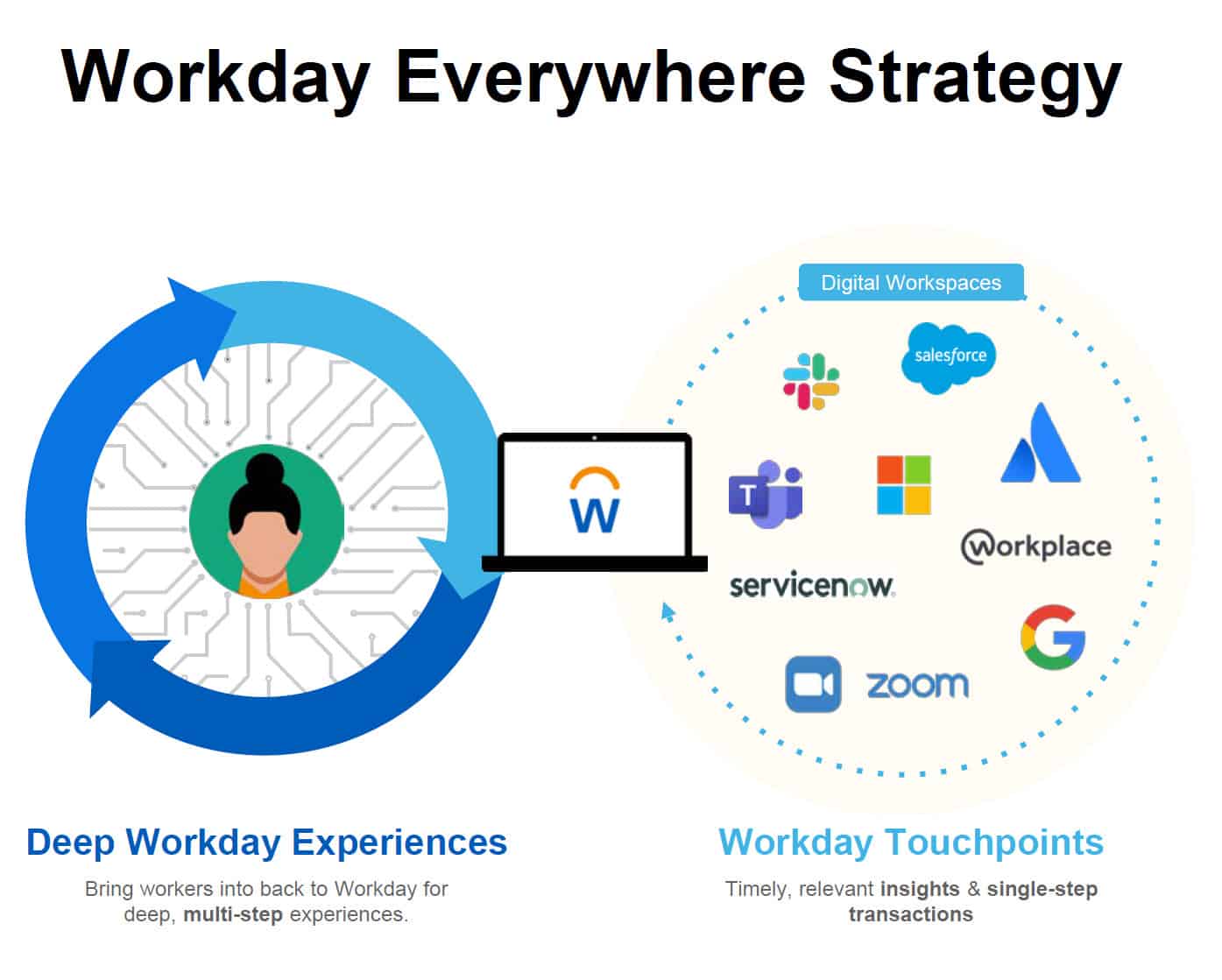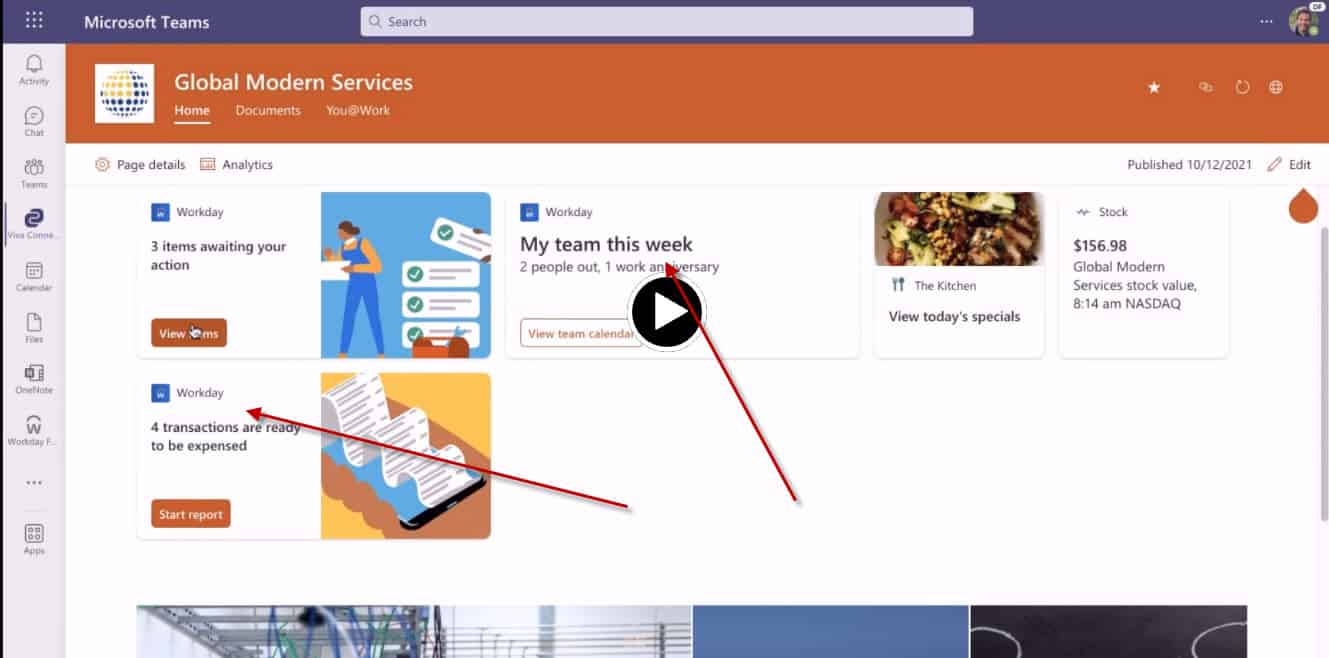Workday Goes Everywhere: Into The Flow Of Work… And More.
From its very founding Workday was designed as an integrated but proprietary system, engineered for the cloud. Workday developed a proprietary database, advanced business process framework, integrated security model, embedded real-time analytics, and a unique user interface.
Well, all that has now changed. Effective today, with the introduction of Workday Everywhere, and the evolution of Workday Extend, the platform is totally open. You can extend Workday to build new applications, you can customize Workday to build new employee experiences, and you can access and use Workday from Microsoft Teams, Slack, and other platforms.
Let me explain how we got here. In the early days (2008 or so), Workday was a proprietary and closed “walled garden,” similar to the Apple iPhone. Unlike existing ERP systems at the time, all the modules worked together and it was an elegantly designed system. Given where most ERP systems were at the time (behind the firewall and highly customized), it was a revolution.
Over the years, however, the cloud matured. Thousands of apps were developed, we started using mobile phones and social systems, voice recognition took off, and people started working remotely. Today employees access Workday from all over the world, contract on a part-time basis, and use their HR systems from Teams, Slack, or a Chatbot. Workday had to adapt.
Today the company offers three “open solutions,” each of which are growing quickly.
First is Workday Everywhere, a new strategy to let you use Workday “in the flow of work.”
 |
As you can see from this chart, Workday Everywhere surfaces Workday experiences and transactions through Touchpoints (direct transactions and notifications) that let you interface with Workday directly from a variety of apps.
I just watched a demo of Workday Everywhere in Microsoft Teams (in Viva Connections, shown below), and it’s really pretty cool. Workday can produce Microsoft Teams “Cards” that show you snippets of information or transactions, making it easy to interact with the system without using menus. This functionality will be available in Teams, Slack, Zoom, and Google Workplace, so you can limit time spent in Workday and access directly what you need from where you work.
 |
Here’s another example of why this is important: consider a company with a lot of “deskless employees” (retail workers, nurses, truck drivers) who need to access Workday? Viva Connections has a mobile app designed for these workers and Workday cards can be embedded easily, exposing journeys or other Workday modules in the company’s Viva deskless app (without the need to use the Workday mobile app).
All this can be created in a low-code experience (it’s point and click) and once these Workday cards are created they will always reflect the latest company information and business process workflow.
This is where all HR applications are going, by the way.
Second, let me highlight Workday Extend, which was originally developed as an app development toolkit. Extend is now a full-fledged development environment.
Extend is a low-code way to build extensions to the Workday system, leveraging the data model, security architecture, and business process engine you already have. Today integrators and customers have built more than 300 new applications on Workday Extend, and they run the gamut from highly strategic to highly technical solutions.
- The University of Pennsylvania built a Vaccine Management app that lets thousands of employees manage vaccine compliance and integrate security around vaccine adoption
- Sun Life built an education assistance application that lets employees request tuition reimbursement, manage the approval process, and add proof of completion to their profile
- BlueCross BlueShield of North Carolina built a compensation review app that lets managers follow a decision tree during comp review, directly tied to the annual compensation grid in Workday
- IBM built a custom Payslips application that lets an individual combine pay information from multiple payroll systems and see earnings to date, serving more than 80% of all IBM employees
- Netflix built a supplier requisition app that lets external suppliers view and manage their PO requests.
While these may seem like arcane applications, every company needs these types of extensions. And building these applications is easy for any IT professional.
Third, Workday is now directly supporting developers. The company hosted its first Developer Conference (DevCon) in July, attracting more than 730 global attendees to attend six days of education. More than 270 hackers built new applications during the 48 hour Hackathon, building 498 applications that accessed 51 systems in less than a week. This kind of community program shows how much focus Workday has put on developers.
 |
Workday Is Opening Up
The bottom line is simple: Workday is opening up.
If you’re a user, you can access it from your system of productivity. If you’re an HR professional or manager, you can build employee Journeys. And if you’re a developer or IT professional, you can extend the system.
Winning vendors always seem to convince customers to “bet their careers” on their platform. By attracting the world of “citizen developers” (a term ServiceNow coined a few years ago), Workday expands its footprint for continued growth in the future.
And there’s another benefit as well. While Workday is a very successful software company, it can’t build everything. By unleashing the power of the developer community, Workday’s partners, customers, and integrators can extend the system into new markets faster than ever before.
Congratulations to Workday on finally becoming a truly open system, one which HR managers, employees, and developers can now use. Mark my words: the faster Workday wins the hearts and minds of developers and end-users, the faster the company can grow.
Additional Resources
Ten New Truths About The HR Technology Market
Workday vs. ServiceNow: The Big Shift
A New Category Emerges: The Creator Platform For Corporate Learning


